Looking for resources to help expand your understanding of the natural world around you? Check out these learning tools below from across our departments, bringing nature, culture, science, and learning for all!
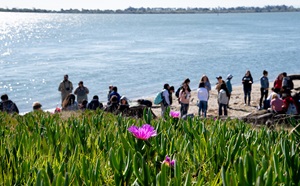
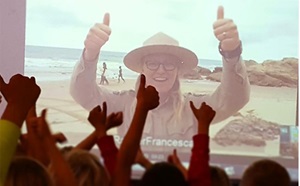
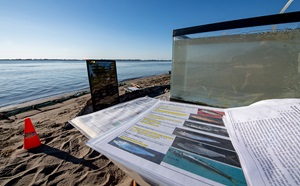
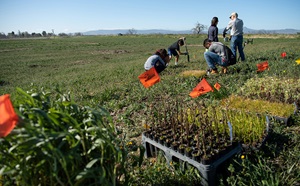
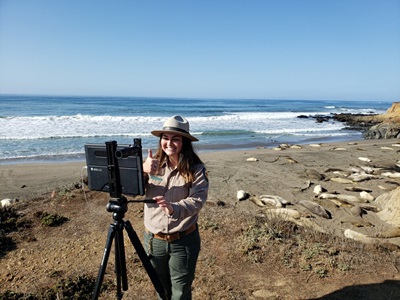
Department of Conservation Educational Portal
Looking for resources on California's energy, land, and mineral resources? The California Department of Conservation’s educational portal offers a wide variety of earth science educational materials including data, maps, and publications. Finding specific information is easy with specific categories for teachers, hobbyist, scientists and students.
If you have a child interested in all things geology, then check out the California Geological Survey (CGS) Kids GeoZone. CGS Kids GeoZone is dedicated to young students having fun while learning about the geosciences. Parents and teachers will find activities and links to things such as how to create your own fossil or make a volcano at home!
Parks Online Resources for Teachers and Students - California State Parks PORTS Program
Join California State Parks every Monday through Friday for its home learning program. Students learning from home will be able to access information on natural resources and cultural heritage from the comfort of their own home. Each session focuses on an activity specialized for a specific range of grade levels, where interpreters read books, tell stories about State Parks, tour iconic museums like Hearst Castle, and explore majestic redwood forests and marine-protected areas. Families can register for the home learning programs by visiting the PORTS program website.
The PORTS website also offers 360-degree virtual tours of various state parks, online teaching tools and links to popular State Parks YouTube channels and previous broadcasts.
Your Guide to the Baldwin Hills
With sweeping views, recreational areas, and large swaths of native plants and wildlife, the Baldwin Hills are a much-loved open space and landmark in Los Angeles. Over the course of the region’s development, the role of the Baldwin Hills has shifted dramatically. Learn about the history of the Baldwin Hills and its natural features, vegetation, and wildlife on Baldwin Hills Nature.

California is the nation’s most populous state and home to more diverse species and ecosystems than anywhere else in the United States. It’s a global biodiversity hot spot, but that biodiversity is also disappearing at one of the highest rates. One way to help reverse this trend is by becoming a citizen scientist! Download the iNaturalist app and start gathering data by taking pictures of plants, trees, animals and bugs in your neighborhood and sharing those images with a digital community for identification. iNaturalist guide cards may also be available for your area to help with identification or simply can be used to learn about biodiversity from around the world.
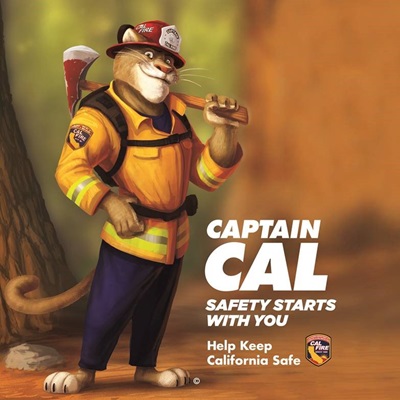
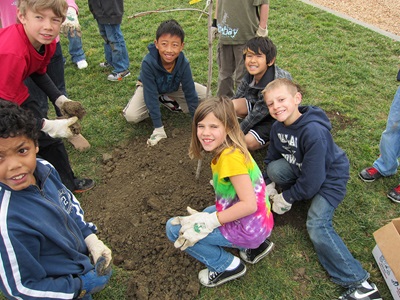
Captain Cal is here to teach children about the many aspects of fire safety and how to protect oneself and family. “Safety Starts with You” is his motto. Check out his educational materials and start building your fire safety knowledge!
Project Learning Tree uses trees and forests as windows to the world to develop students’ understanding of the environment and actions that anyone can take to conserve it. Project Learning Tree includes activities for families, helpful material for teachers and environmental activities for children.
Check out Leaf Classification to learn how scientists and casual observers can identify plants and trees. In this lesson plan, geared toward high school students, you can develop a system for categorizing a set of natural objects and learn about hierarchical classification systems.
How do plants and trees grow? Green-Up Cards provides step-by-step instructions that help students (geared towards high school students) recognize what a bud looks like and the progression of green-up from the time of budburst.
California State Parks – Marine Protected Areas Curriculum
Dive into marine protected areas (MPA) through this innovative PORTS curriculum. Developed by California State Parks and California Department of Fish and Wildlife, this program teaches students about what MPAs are, why they were created, and how they are being monitored for progress.
Marine Protected Area Collaborative Network Learning Tools
The Marine Protected Area Collaborative Network offers kids and adults the opportunity to learn more about our oceans and what positive stewardship can do to help restore and protect our oceans. The MPA Collaborative Network has brought a suite of MPA learning tools including a coloring book to teach us about our oceans.
Find a series of fun and engaging activities, specifically geared toward young children, to learn about MPAs from the Natural Resources Agency.
The Back Bay Science Center is a hands-on facility where students and the public can enjoy the estuarine ecology of Newport Bay and marine ecology of the ocean while learning about natural resource conservation and stewardship throughout the watershed. The Back Bay Science Center is an educational and research facility that is open to the public for a Community Day program on Sundays from 10 AM - 2 PM. For more information about Community Day click here.
Passionate about preserving California’s beautiful coastlines? Want to learn more about efforts being made to restore our shores? Check out this informational video from the California Coastal Conservancy about living shorelines, a nature-based strategy to safeguard our coastlines against potential sea level rise in the face of climate change.
When you're stuck at home, come here to continue your child's science learning with our easy to follow activities. This space is designed for families to explore, investigate and have fun learning together without leaving home. All activities use easy-to-find household supplies, and are appropriate for a variety of ages. Every weekday at 10 a.m., a new family activity (using household supplies) debuts as part of California Science Center’s “Stuck at Home Science” — everything from “straw rockets,” a “pancake lab,” “ice cream science” and a “pom-pom launcher.”
California Environmental Protection Agency Education Programs
The California Environmental Protection Agency (CalEPA), the sister agency to the Natural Resources Agency, has a series of educational programs providing easy access to environmental teachings for K-12. You can also check out CalEPA’s Kids’ Zone featuring fun websites to learn more about protecting and preserving the environment to keep California a healthy place for kids.
Climate Conversations with California Tribes
“Climate Conversations” is a short film featuring California Tribal members from Tuolumne Band of Me-Wuk Indians, Dry Creek Band of Pomo Indians, Tubatulabul Tribe and Blue Lake Rancheria, discussing their perspectives and experiences with a changing climate, and how it affects their livelihoods and culture.
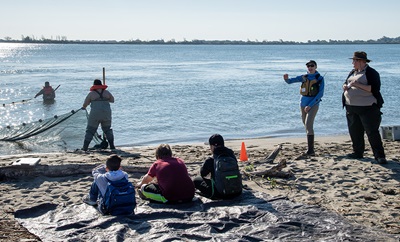
Department of Water Resources Water Research and Education
The Department of Water Resources (DWR) encourages Californians of all ages to learn about water, including where it comes from, how we use it, and how to conserve it. Check out DWR’s wide variety of resources for teachers and other educators that encourages water education in and out of the classroom.
You use water every day at home. Brushing your teeth, washing out your milk glass, taking a shower or bath—all of these activities use water. But water is a limited resource. Help save California’s water by changing the way you use water inside and outside your home. Learn more about water and what you can do to Save Our Water!
Join scientists from the California Department of Water Resources and explore our wonderful water resources. These family-friendly presentations bring science and the beauty of California’s outdoor world into your home. Learn about the fish, microscopic life, birds and other critters that make their homes in the largest estuary on the west coast.
Recommended ages: 10 years to Adult
Palisades Fire Water Supply Analysis
Need some inspiration and guidance on energy management in your home? Energy Upgrade California is here to help Californians be more energy efficient, utilize more sustainable natural resources, reduce demand on the energy grid, and make informed choices about energy use at home and at work. Learn what you can do today to make your home energy efficient.
Explore how projects funded by the California Energy Commission’s Clean Transportation Program are helping the state reach its climate goals, meet clean air standards, reduce reliance on fossil fuels, and support in-state economic development.
Check out the California Energy Commission’s featured Energy Innovation Showcase, highlighting over 460 innovative energy projects. Pprojects range from energy efficient drying for walnuts and LED lighting solutions to microgrids and low-emission biogas power generation in underserved communities, and more!
Tracking Progress to Clean Energy
The California Energy Commission’s tracking progress reports provide a comprehensive assessment of California’s progress toward a global clean energy future. The reports cover a range of sectors; providing information, metrics, and resources about where we are today and where we need to be. The CEC also serves as California’s central repository for the collection and storage of data on all forms of energy supply, demand, efficiency and conservation, transportation, and related subjects. The Energy Almanac provides current and historical energy-related data.
The California High-Speed Rail project is setting a new green standard for infrastructure by adopting the greenest construction practices. Once complete, High-Speed Rail will be using 100-percent renewable energy to power its system. Learn more about the sustainability of the project and how it’s good for the environment. Then get creative and colorful with this fun activity sheet!
State Regulation of Crude Oil Pipelines in Santa Barbara County
Sable Offshore Corporation is working to restart the Santa Ynez Unit oil and gas operation in Santa Barbara County. This operation includes offshore platforms, pipelines, and the Las Flores Canyon Processing Facility, including onshore pipelines responsible for the 2015 Refugio Oil Spill. This summary explains state agencies’ roles in the oversight of these operations and current actions underway.
Sable Town Hall Agenda (March 13, 2025)
Summary of State Regulation of Crude Oil Pipelines in Santa Barbara County
California Natural Resources Agency Sable Town Hall Overview
California Coastal Commission Sable Presentation
State Lands Commission Sable Lease Presentation
California Department of Fish and Wildlife Sable Presentation
California Department of Fish and Wildlife-OSPR Sable Presentation
CAL FIRE-Office of the State Fire Marshal Pipeline Safety Presentation
Department of Conservation-CalGEM Sable Pipeline Briefing
State Parks Easement Process Presentation
California Water Boards Sable Presentation
Classroom Aquarium Education Program
Through a classroom-like experience of hatching fish eggs and other coordinated activities, students can learn first-hand about the value of aquatic environments, the balance that must be met to maintain and preserve California's fisheries and aquatic habitats, and how their personal actions affect these valuable resources. Instructive and engaging videos available.
Fishing in the City is a program that gives city dwellers an opportunity to learn how to fish and shows them where to fish. The program, established in 1993, serves Californians living in the Sacramento, San Francisco and Los Angeles metropolitan areas. School programming available upon request.
California National Archery in the Schools Program - Teach Archery to Students in Grades 4-12
The California National Archery in the Schools Program (CalNASP) is an international-style archery program taught by teachers and delivered to students in physical education classes in grades 4-12. The program is administered by the Department of Fish and Wildlife in consultation with the California Department of Education.
The Elkhorn Slough National Estuarine Research Reserve is 1700 acres located at the east end of the Elkhorn Slough, inland from Moss Landing. The Visitor Center is home to fun and informative exhibits, a nature bookstore, and is staffed with knowledgeable naturalists who can answer your questions. There are picnic tables, restrooms and 7 miles of hiking trails.
San Joaquin River Parkway
Located in the heart of the Central Valley, visit the San Joaquin River Parkway’s parks, trails, river access, and visitor centers! Explore, experience, and enjoy all that the Parkway has to offer.
-
Friant Interactive Nature Center: Come take a stroll, feed the trout, view California native plants, and let the kids explore the life of a trout through fun activities!
-
San Joaquin Fish Hatchery: A major producer of trout and inland salmon, San Joaquin Hatchery is also a great place to visit. Along the San Joaquin River, just downstream from the Friant dam, San Joaquin Hatchery has picnic grounds among the garden of California native vegetation. Come take a photo with the enormous wood-carved rainbow trout! Visitors can also enjoy interacting with nature at the San Joaquin River Parkway Trail.
-
Small Fry Children’s Trail: The Small Fry Children’s Trail is a play area and educational introduction to ecosystems, encouraging children to learn about the life of a trout while enjoying nature. “Stormy Creek,” for example, demonstrates a bioswale, which is a landscaped area designed to remove silt and pollution from surface runoff water before entering a river system like the San Joaquin River.
Located 60 miles north of Sacramento, Gray Lodge's natural diversity is an ideal setting along the Pacific Flyway, home to a haven for wildlife. Surrounded by miles of rich agricultural lands, this 9,200-acre wetland features informative exhibits, viewing hides, observation platform, a 3-mile auto loop, a 0.6-mile nature trail, guided tours and services, school field trips, and many self-led opportunities for adventure and learning.
Yolo Bypass Wildlife Area and Nature Center
Yolo Bypass Wildlife Area is the perfect spot to escape urban life in nearby Sacramento and Davis. Covering 25 square miles and home to nearly 200 species of birds, the Wildlife Area is located in the heart of one of the country’s richest agricultural areas next to a bustling metropolitan area, Sacramento. Bird watchers, hunters and schoolchildren all come to the area to experience wildlife up-close. There are an assortment of engaging field explorations for audiences of all ages are offered throughout the year!
Held October through March, the Exploring the Wetlands program is designed for large group environmental education. Targeting students grades 2-6, the program focuses on wetland vegetation, bird biology, wildlife evidence and aquatic invertebrates. An associated walk through the wetlands follows a 0.6-mile nature trail. This program promotes natural resource conservation and helps students build an awareness of wetland wildlife. A docent will teach your class about the plants and animals found along a 0.3-mile walk to the Viewing Platform; there is a minimum participation of 60 students per youth. Reservations required.
Through the Discover the Flyway program, the Yolo Basin Foundation has, in partnership with the Department of Fish and Wildlife (CDFW), trained hundreds of teachers to lead students on field activities while visiting the Yolo Bypass Wildlife Area. There are many ways to connect to nature, learn about science, protect wetlands, and get involved in conservation from home. Explore the rich variety of virtual learning resources on their website.


